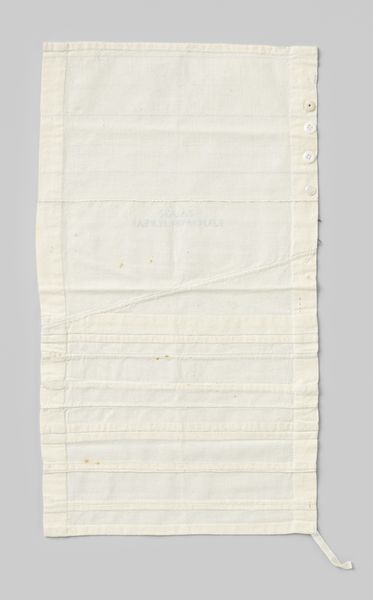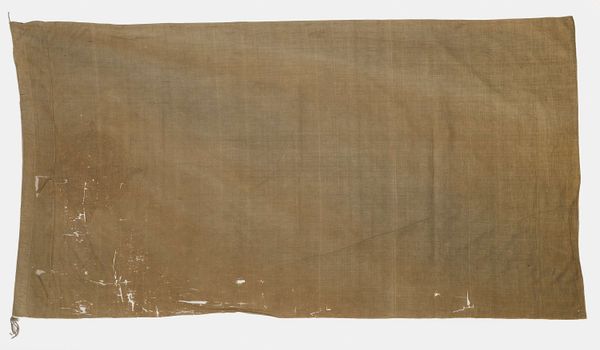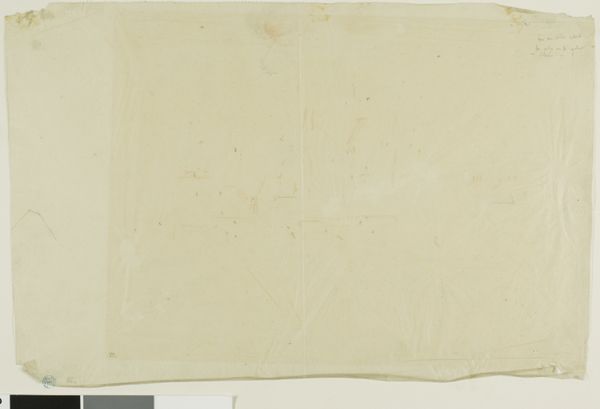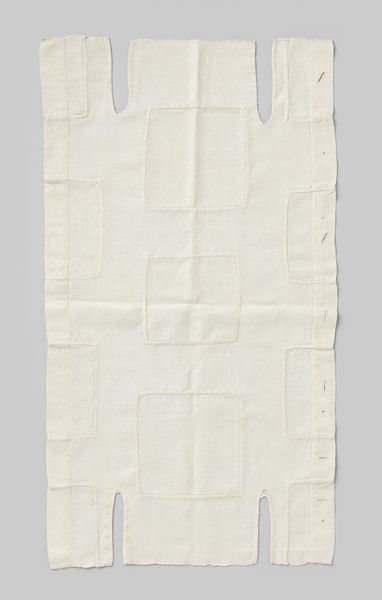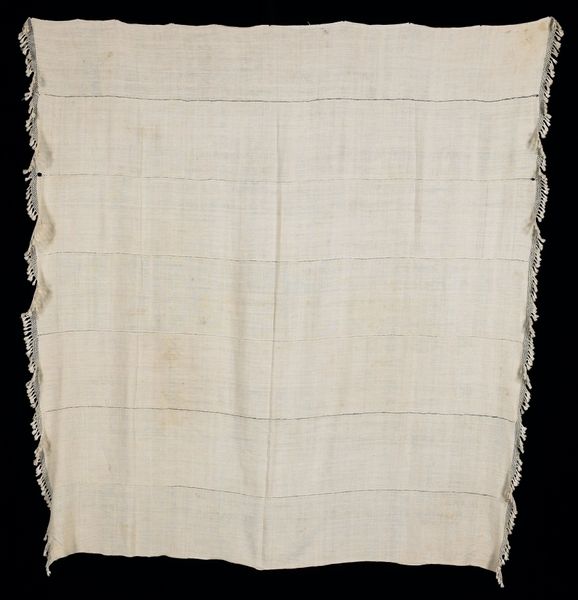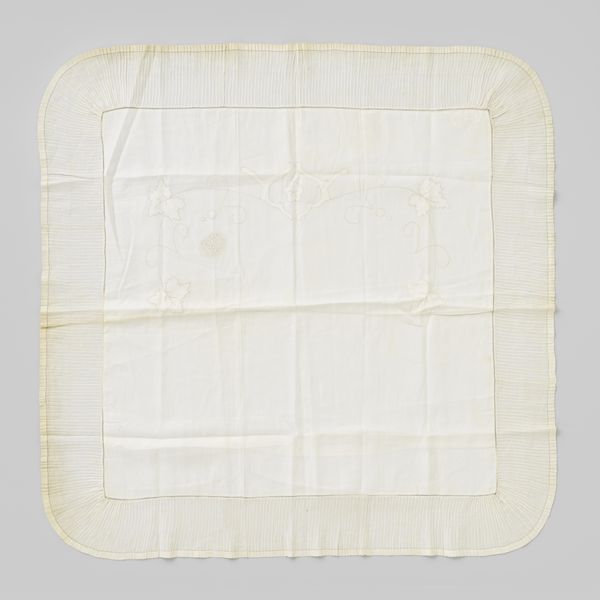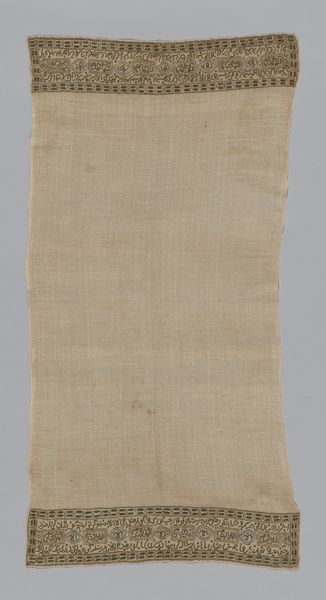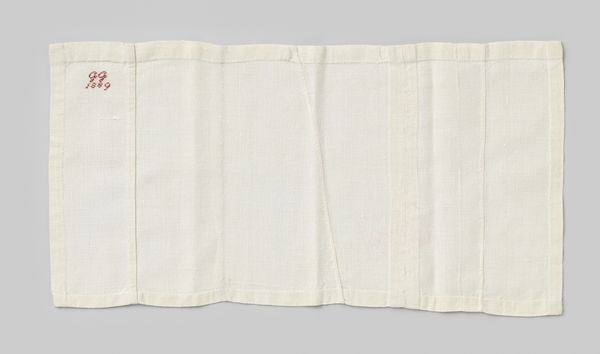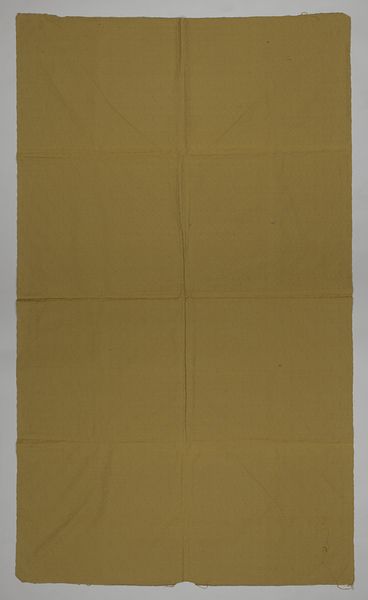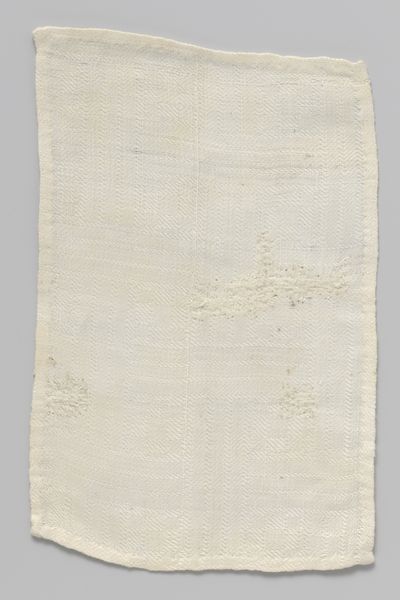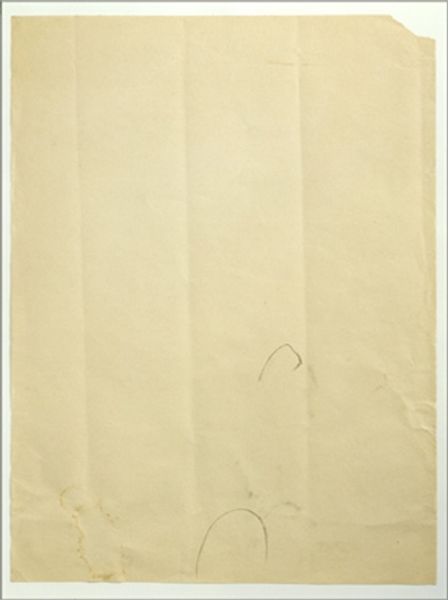
drawing, fibre-art, painting, textile, cotton
#
drawing
#
fibre-art
#
water colours
#
painting
#
textile
#
romanticism
#
cotton
#
watercolor
Dimensions: 37 x 27 1/2 in. (94 x 69.9 cm)
Copyright: Public Domain
Curator: Up next, we have "Pillow Slip," created circa 1821-1825 by Jane Simonton Chapman. It’s a seemingly simple piece, watercolor on cotton, and currently held in the collection of the Metropolitan Museum of Art. Editor: My immediate reaction is its almost unbearable simplicity. A blank square of cotton? There's a fragility, an intimacy evoked simply by its unassuming nature. Curator: Absolutely. It's easy to dismiss it as merely functional, but in the context of the 19th century, handmade textiles were laden with meaning. Women often expressed their creativity and skill through needlework and similar practices, within societal constraints. Think of the 'sampler,' an ostensibly didactic piece that actually allowed an assertion of selfhood through meticulous practice. Editor: Right. So this pillow slip moves beyond the purely domestic; it exists at the intersection of artistry and necessity, reflecting the artist's interiority within the limitations imposed by her social role. Can you imagine the weight of unspoken sentiments imbued in each stitch? Or perhaps even the lack of decoration suggests an active defiance of expectation? Curator: That resonates. These pieces became a vital aspect of a woman's identity and legacy. We also have to examine who had access to these materials, who had the leisure to dedicate time to create them. Social class is indelibly written on even seemingly neutral items. The labor of women like Chapman shaped both domestic spaces and social fabrics, and tells a richer story when viewed beyond simplistic binaries of gender and artmaking. Editor: Yes, by challenging the distinction between fine art and craft, this object offers a vital portal to explore the narratives of countless women largely absent from dominant art historical accounts. Each fold, each subtle stain, hints at the personal histories often overshadowed by broader historical narratives. Curator: It forces us to confront whose stories we are typically telling in art history. What did comfort mean then? Whose comfort mattered? Editor: Absolutely. Thinking about how history is embroidered, isn’t it? What is consciously put in and consciously left out of the record. A seemingly ordinary piece of fabric, but actually pregnant with meaning, resistance and maybe even, dare I say, revolution.
Comments
No comments
Be the first to comment and join the conversation on the ultimate creative platform.
